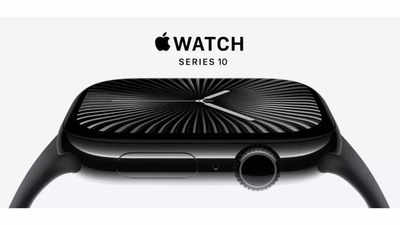- News
- Technology News
- Wearables News
- Explained: How sleep apnea detection will work for Apple Watch Series 10, Series 9, and Apple Watch Ultra
Trending
Explained: How sleep apnea detection will work for Apple Watch Series 10, Series 9, and Apple Watch Ultra
Apple's latest smartwatch, the Apple Watch Series 10, introduces sleep apnea detection. This feature will also be available on Series 9 and Apple Watch Ultra with watchOS 11. Using an accelerometer to monitor wrist movements, the watch detects breathing disturbances and notifies users of potential sleep apnea, offering data for healthcare evaluation.

Earlier this week Apple launched its latest smartwatch -- Apple Watch Series 10. One of the major highlights of the smartwatch is sleep apnea detection functionality. Apple has announced that with watchOS 11, the Apple Watch Series 10, Series 9, and Apple Watch Ultra will offer sleep apnea notifications. Here’s everything you need to know about sleep apnea and how the feature will work on the Apple Watch.
What is sleep apnea
Sleep apnea is a potentially serious condition where breathing stops momentarily during sleep. The condition, which is estimated to impact more than 1 billion people worldwide, goes undiagnosed in most cases, and if left untreated, can have important consequences on health. Building on the intelligent health features already available, Apple Watch now offers a feature to help identify signs of sleep apnea.
How Apple Watch will detect sleep apnea
The new sleep apnea algorithm analyses breathing disturbance data, enabling the Apple Watch to notify users if signs of sleep apnea are detected. The notification will include the time period when potential sleep apnea occurred, educational resources on the importance of seeking treatment, and a PDF summarising three months of breathing disturbance data, which can be shared with a healthcare provider for further evaluation.
The sleep apnea notification feature was developed with advanced machine learning methods, validated in a clinical study, and is expected to receive marketing authorisation from the FDA and other global health authorities soon. Sleep apnea notifications will be available in more than 150 countries and regions this month, including the US., the EU, and Japan.
What is sleep apnea
Sleep apnea is a potentially serious condition where breathing stops momentarily during sleep. The condition, which is estimated to impact more than 1 billion people worldwide, goes undiagnosed in most cases, and if left untreated, can have important consequences on health. Building on the intelligent health features already available, Apple Watch now offers a feature to help identify signs of sleep apnea.
How Apple Watch will detect sleep apnea
To detect sleep apnea, the Apple Watch utilizes its accelerometer to monitor subtle wrist movements linked to interruptions in normal breathing patterns, tracked by a new metric called Breathing Disturbances. While occasional breathing disturbances are normal, tracking them is crucial, as frequent occurrences over multiple nights could indicate potential sleep apnea and provide insights into sleep quality and restfulness.
The new sleep apnea algorithm analyses breathing disturbance data, enabling the Apple Watch to notify users if signs of sleep apnea are detected. The notification will include the time period when potential sleep apnea occurred, educational resources on the importance of seeking treatment, and a PDF summarising three months of breathing disturbance data, which can be shared with a healthcare provider for further evaluation.
The sleep apnea notification feature was developed with advanced machine learning methods, validated in a clinical study, and is expected to receive marketing authorisation from the FDA and other global health authorities soon. Sleep apnea notifications will be available in more than 150 countries and regions this month, including the US., the EU, and Japan.
End of Article
FOLLOW US ON SOCIAL MEDIA

